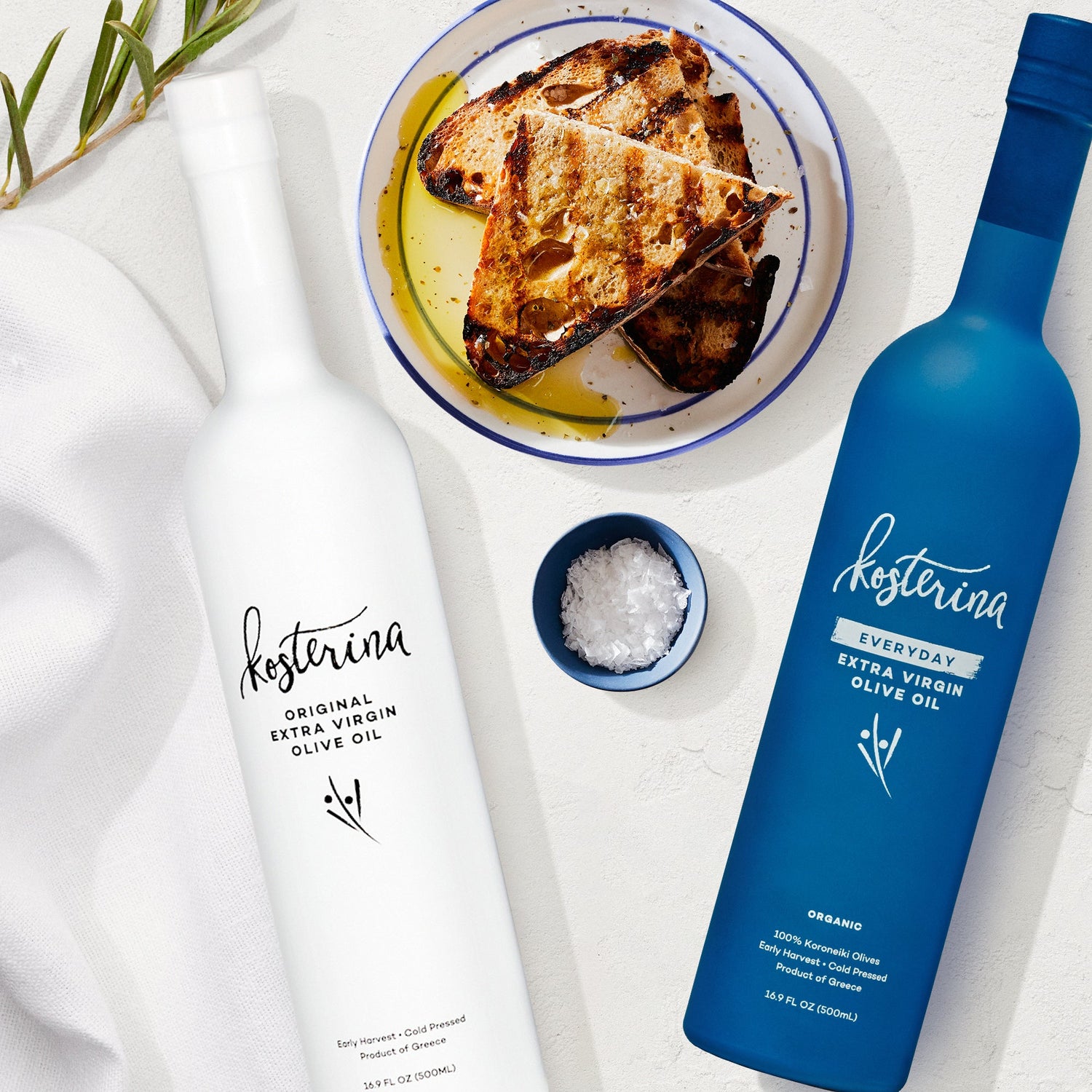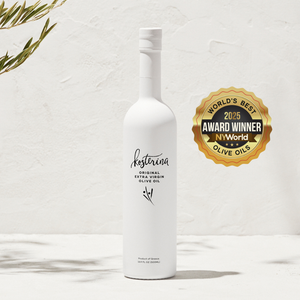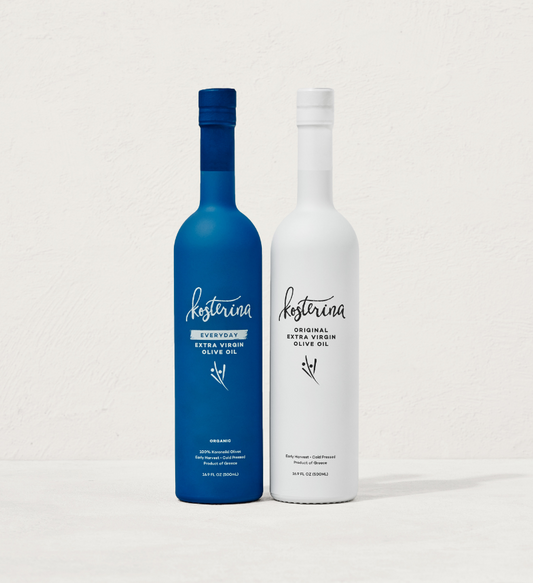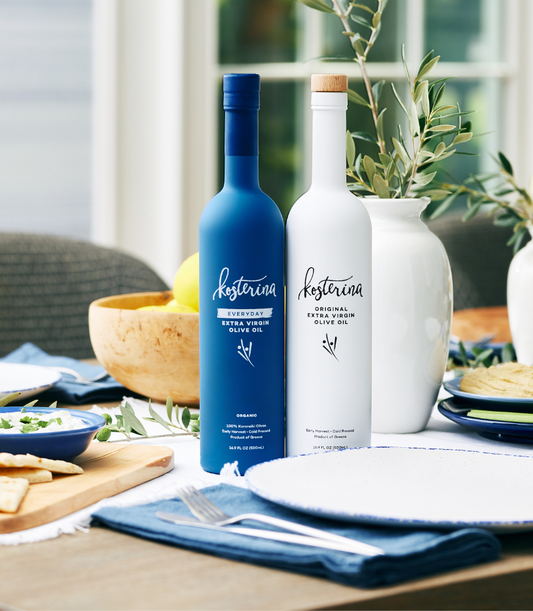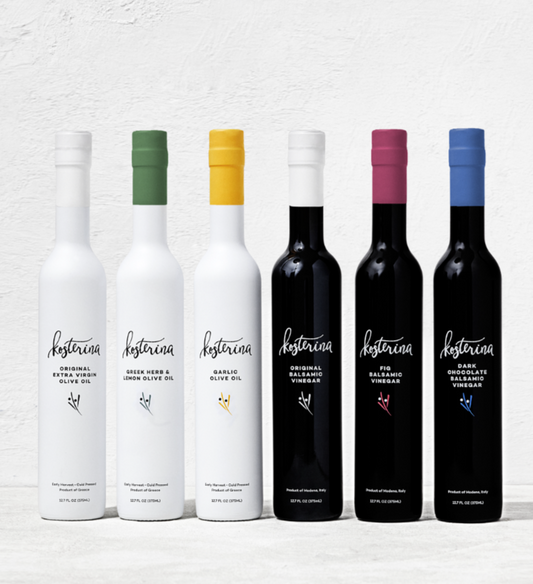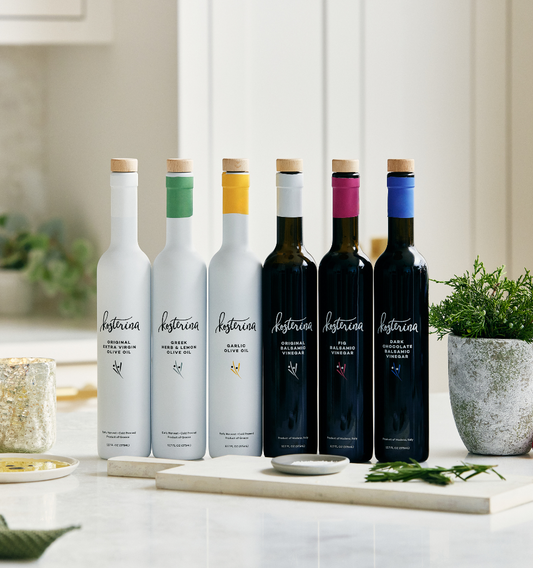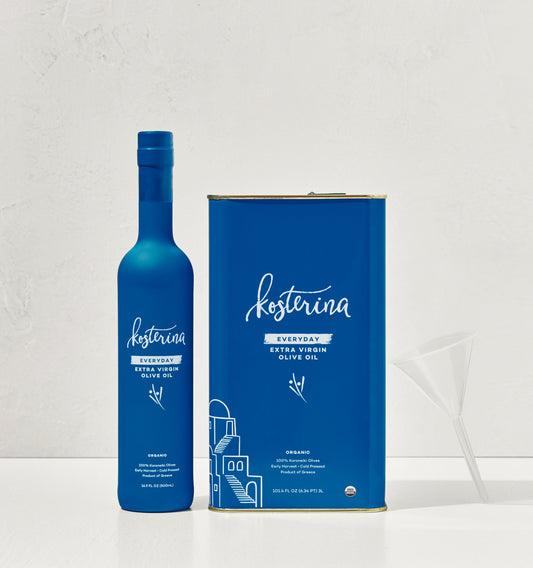What Are Olive Oil "Blends"—and Should You Be Using Them?
If you’ve ever grabbed a bottle of olive oil off the shelf and noticed the word “blend” on the label, you might have wondered—what exactly does that mean? Are olive oil blends just as healthy as single-origin extra virgin olive oil (EVOO), or is there something else going on? Let’s break it down.
What Are Olive Oil Blends? The Good, The Bad, and The Ugly
“Blended” can refer to a few things when it comes to olive oil.
First, let's be clear: some of the finest olive oils in the world are blends. Many premium EVOO brands combine different olive varieties to achieve a specific flavor profile or enhance polyphenol content. For example, blending a mild oil with an ultra-high-phenolic oil can boost health benefits or adjust the taste—making it either bolder or more delicate.
Compared to monovarietal EVOO, blending can be acceptable, but unfortunately, in some cases, blending can reduce oil quality due to increased exposure to factors like sunlight, heat, and extended transit times, potentially affecting freshness and nutritional value. And some olive oil blends are can be mixtures of previous harvest olive oils from various regions - this is where blends originally got a bad reputation. We recommend avoiding oils that blend olive oil and seed oils as seed oils can potentially trigger inflammation.
At Kosterina, our EVOO is monovarietal—never blended—featuring the Koroneiki olive variety for its naturally mild flavor and high polyphenol content.
Why Do We Stick to Pure Extra Virgin Olive Oil at Kosterina?
At Kosterina, our EVOO is monovarietal—never blended—featuring the Koroneiki olive variety for its naturally mild flavor and high polyphenol content.
Health is always our priority, so we choose premium-quality, single-origin, early harvest EVOO, rich in antioxidants that support heart and brain health. EVOO has been a Mediterranean diet staple for centuries. Contrary to some claims, real EVOO has a high smoke point—between 390°F and 468°F according to the North American Olive Oil Association—making it excellent for cooking.
Fun fact: You can cook with Kosterina extra virgin olive oils up to 425°F.
Bonus: EVOO has the lowest oxidation rate when cooking.
Try Kosterina Original EVOO—you’ll never go back.
Peace, Love, & EVOO,
Katina and The Kosterina Team
